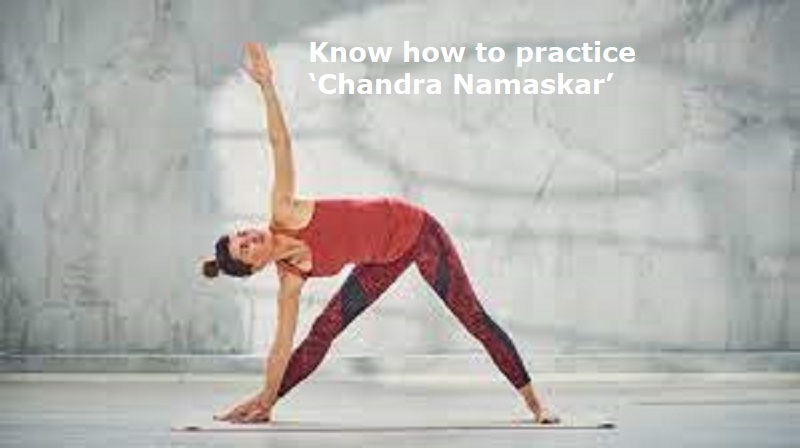
Mumbai: Chandra Namaskar, also known as Moon Salutation is a series of yoga asanas that are performed in a specific sequence to honour and connect with the energy of the moon. This yoga asana can help calm the mind, body, and soul. The yoga pose helps to balances hormones, increases flexibility, aids in digestion and also, promotes better sleep.
Chandra Namaskar is usually practised in the evening or at night when the moon is visible. This practice involves a series of 14 poses that flow together.
To begin your practice of Chandra Namaskar, find a quiet and comfortable space where you can move freely without any distractions. You can use a yoga mat or practice on a soft surface such as grass or carpet.
Here are the steps to follow:
Step 1: Pranamasana (Prayer Pose)
Stand tall at the front of your mat with your feet together and hands in a prayer position at your heart centre. Take a few deep breaths to centre yourself and set your intention for the practice.
Step 2: Hasta Uttanasana (Raised Arms Pose)
Inhale and raise your arms towards the sky, keeping your hands together in a prayer position. Arch your back slightly, opening up your chest and lifting your gaze towards your fingertips.
Step 3: Padahastasana (Standing Forward Bend)
Exhale and slowly bend forward from your hips, keeping your spine straight. Bring your hands down to touch the ground or rest them on your shins.
Step 4: Ashwa Sanchalanasana (Equestrian Pose)
Inhale and step your right foot back, keeping your left foot in place. Gently lower your right knee to the ground and lift your head.
Step 5: Santholanasana (Plank Pose)
Exhale and bring your left foot back to join the right, coming into a plank position. Ensure that your body is in a straight line from head to heels.
Step 6: Ashtanga Namaskar (Eight-Limbed Salutation)
Also Read: Astrological predictions for today, February 10
Slowly lower your knees, chest, and chin to the ground while exhaling. Your hips should remain lifted, and elbows should be tucked close to the body.
Step 7: Bhujangasana (Cobra Pose)
Inhale and slide forward into a cobra pose, keeping your legs and pelvis on the ground. Your hands should be placed beside your chest, and your shoulder blades should be pulled back.
Step 8: Adho Mukha Svanasana (Downward Facing Dog Pose)
Exhale and lift your hips towards the sky, coming into a downward-facing dog pose. Your hands should be shoulder-width apart, and your feet should be hip-width apart.
Step 9: Ashwa Sanchalanasana (Equestrian Pose)
Inhale and step your right foot forward between your hands, keeping your left knee on the ground. Lift your head and gaze towards your fingertips.
Step 10: Padahastasana (Standing Forward Bend)
Exhale and bring your left foot forward to meet the right, coming into a forward bend. You can bend your knees if needed to touch the ground with your hands.
Step 11: Hasta Uttanasana (Raised Arms Pose)
Inhale and slowly rise, keeping your arms by the sides of your body. Arch your back slightly and lift your gaze towards the sky.
Step 12: Pranamasana (Prayer Pose)
Exhale and bring your hands back to the prayer position at your heart centre. Take a moment to feel the energy flowing through your body.
Repeat steps 2-12 with the left foot leading in steps 4 and 9 to complete one round of Chandra Namaskar.

Post Your Comments